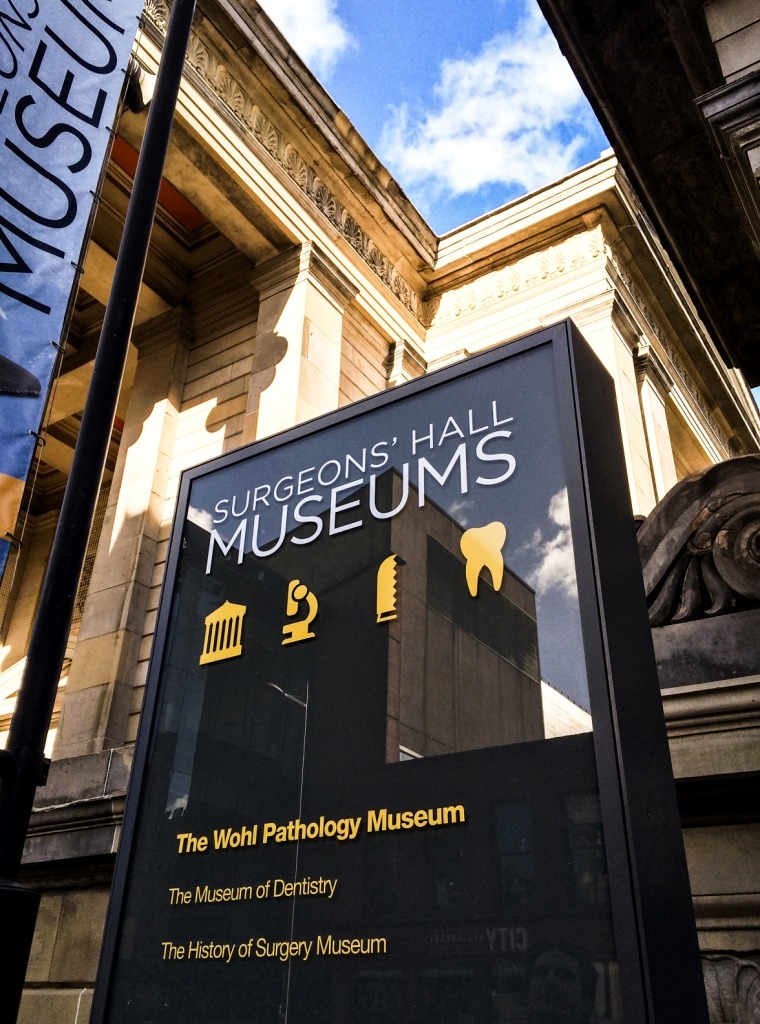A purposeful and appropriate freakshow

Spouse and I had a quick look around the Surgeons’ Hall Museums in Edinburgh in 1996, but I don’t remember a huge amount about it. It’s had a major refurbishment since then (in 2015) in any case, so it’s a very flash affair with lots of stainless-steel handrail and hanging float glass. Given what medical collections can be like, this might set off some alarms, at least if what you like is a freakish spirit collection from the early days of science housed in beautiful old wooden cases in a classic Victorian split level gallery. Fortunately, these aspects are entirely intact at Surgeons’ Hall, with the modern build serving mainly to connect and render accessible the two buildings which house the Wohl Pathology Museum to the north, and the History of Surgery and Dental collections to the south. The museums occupy only a part of the site, which is the home of the Royal College of Surgeons of Edinburgh, with an iconic neo-Classical facade designed by William Playfair, but the collections, intended as a teaching resource, have always been a major part of the College’s facilities. The History of Surgery Museum has been extensively redisplayed without obscuring the archetypal Victorian museum layout, with an elevated gallery surrounding and overlooking an open display floor. A recreated anatomy theatre occupies the centre of the space, with a fibre-glass cadaver onto which various stages of dissection are projected, while the transcript of an eighteenth century autopsy is expertly read by an actor seen on a screen to the side. The remainder of the gallery space relates the important part played by the RCSED and its members in the development of antisepsis, anaesthesia, and various surgical techniques, as well as discussing the way that the surgeon Joseph Bell served as an inspiration for Arthur Conan Doyle’s Sherlock Holmes. The pathology collection, still housed behind Playfair’s grand facade, is much more like one might imagine it has always been: it’s probably a good thing that it was not refurbished until recently, as many museums have only just begun to realise that their old display cases have historical value in their own right. The recent redisplay has retained not only the original cases, but the original jars in which the spirit collection is conserved, with modern lighting, safety panels, and interactive displays seamlessly integrated into the space. Free-standing display cases downstairs (mainly dedicated to various medals awarded to to RCSED members) retain the Victorian glass, as can be seen from the ripples that appear when it is viewed obliquely. Of course it’s only the dedicated museum nerd that will value the pathology display for these aspects, or even notice them at all, given that they exist around a vast and varied array of interestingly deformed human body parts: a collection like this has a powerful effect, one which is perhaps enhanced by the medical context. A freakshow is a freakshow, and one which has been assembled as purposefully as this requires no sensationalism at all to have a significant impact. Collection, display and buildings are all of the very highest standard here, and it’s a real pleasure to see a museum curated so appropriately, with such a strong balance of interpretative and physical materials.